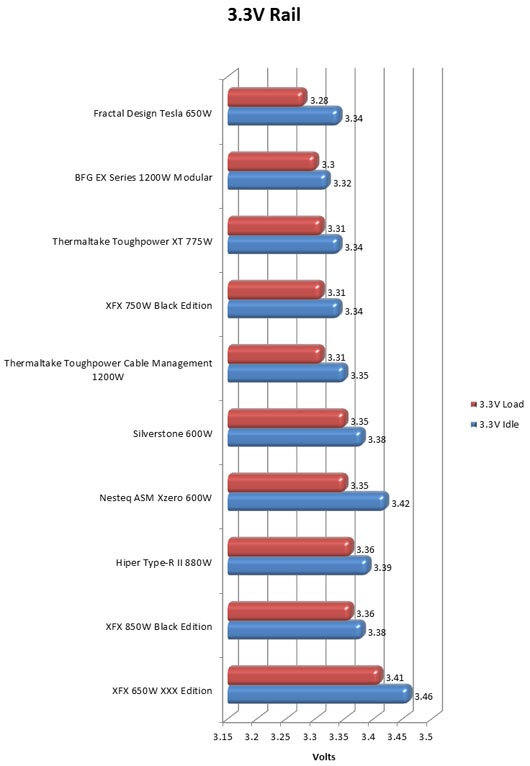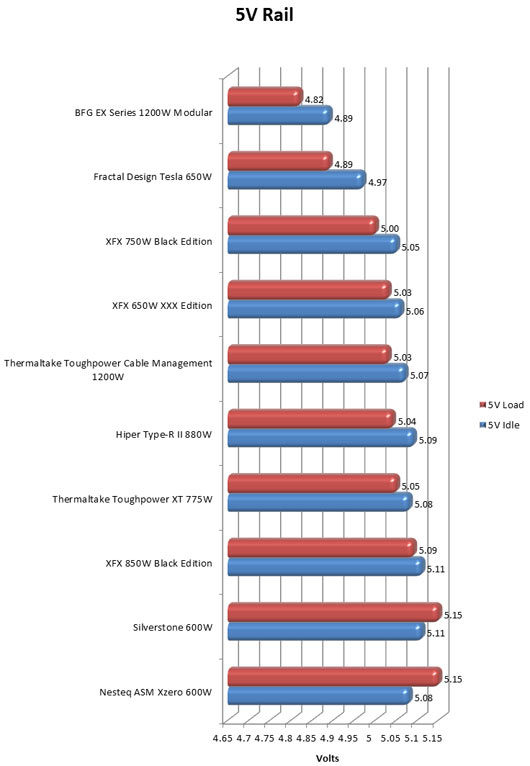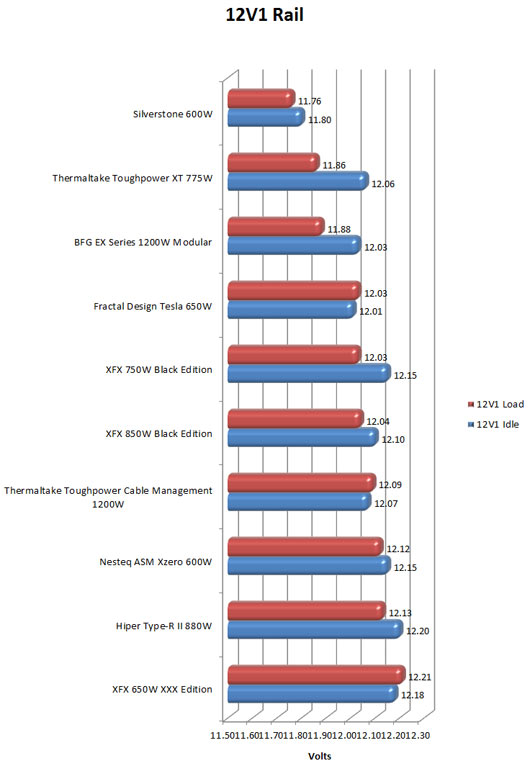Thermaltake ToughPower XT 775W Power Supply Review
Andy Ruffell / 14 years ago
Results
The 3.3v rail is the first one to test which takes care of very few components as they are left to the higher voltage rails, mainly the 12V rail. Back with the original ATX specifications, the 3.3V rail was used to power most of the components including CPU, memory and expansion cards, but these are now generally handled by the 12V rail.
As you can see from the results, the 3.3V rail did give some stable results at idle and on load. For a power supply using this amount of power, the results were expected and nothing out of the ordinary.
Next to test is the 5V rail, which used to take responsibility with the 3.3V, but once again, most of a computers components are dealt with by the 12V rail.
The results showed consistency with the 5V rail and once again provided stable results for a power supply of this power. You can see that the 5V rail on load gave a little bit higher results than expected, but you are unlikely to see this power supply at 100% load on most systems, so it’s nothing to worry about.
Lastly, we have the 12V rail to test, which is the most important, as it runs the main components of a system including CPU, memory, graphics cards and so forth.
Once again, consistency kicked in, giving concise results as we expected, but did also undervolted ever so slightly at maximum load, but once again, this isn’t expected to be seen as the majority of user’s won’t see this power supply at 100% load.






















